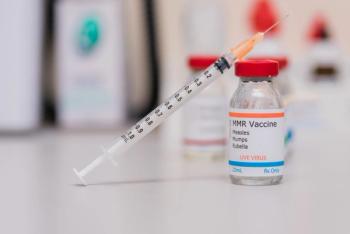
Different Factors Impact Quality of Life for Adults and Adolescents With Acne
Researchers found that different factors can negatively impact the Dermatology Life Quality Index scores for adults and adolescents with acne.
While acne can negatively impact Dermatology Life Quality Index (DLQI) score, different factors for adults and adolescents result in a poor score, according to a study
Researchers in Turkey undertook a study to understand the demographic and socio-clinical characteristics impacting QOL in adolescents and adults with acne. “It has been widely accepted that acne impacts the [QOL] in adult patients more than their younger counterparts,” they explained. “Nonetheless, the literature consists of conflicting results.”
They found that acne severity influenced adolescents more than the presence of acne alone, while for the adults, they found that one instance of an acne flare up can weaken the DLQI.
A total of 1013 patients with acne participated, with 333 female and 47 male adults, and 535 female and 98 male adolescents between January and December 2018 in 2 medical centers in Turkey. Adolescents were defined as being 12 to 25 years old and adults as 25 years old or older.
Gender, socio-clinico-demographics, and comorbid associations were studied in relation to the DLQI. Data collected included severity, onset and location of acne, smoking and alcohol habits, medication history, presence of seborrhea, and other comorbidities.
The median total of the DLQI scores of both groups did not show significant differences, and age, gender, duration, body mass index, family history, and psychiatric disorders showed zero influence on QOL.
The factors with the largest impact on the DLQI for the adults were allergic disorders, hormonal imbalances, and previous treatment history, while for adolescents they were severity and location of acne, hirsutism, hyperseborrhea, premenstrual exacerbation, menstrual irregularities, previous treatment history, and smoking.
Hyperseborrhea, a hypersecretion of sebum on the scalp, was more commonly found in adolescents compared with adults, and there was no change of QOL in this category for adults, but there was significant negative impact on QOL for adolescents with over the normal amount of seborrhea (P = .007).
Hirsutism prevalence was not significant between adult and adolescents’ groups, nor did it significantly influence adult QOL. However, it did significantly negatively impact adolescents with hirsutism than those without (P = .03).
Adolescents demonstrated significantly more menstrual irregularity than the adults, corresponding with a significant impact on DLQI for the adolescents but not the adults (P = .986).
Premenstrual exacerbation history was more common among adults than adolescents, but adolescents who experienced premenstrual exacerbation were more statistically impacted than other adolescents without symptoms (P = .004). Adults with and without premenstrual exacerbation were not significantly impacted.
Past acne treatment resulted in a significant decrease in QOL for both adolescents and adults (P = .016 for adolescents and P = .013 for adults). Allergic disease presence negatively impacted QOL in the adult group, but not the adolescent (P = .045).
Both groups had significant smoking history, with a history of smoking being twice as common in the adult group. However, smoking only had a significant effect on the DLQI in the adolescent group (P = .004).
The findings of this study can help clinicians of adult and adolescent acne patients understand potential impacts of the disease on QOL, the authors noted.
Possible limitations to this study include differing QOL assessments, study environment, and the inclusion characteristics of populations in the study. There is no universal definition of at what age adult-onset acne is classified, which can offer a possible limitation in comparing other studies.
Since the study was conducted only in 2 hospitals in 2 provinces in Turkey, there may be limited generalizability to the findings. In addition, there was no clinical tool present to measure anxiety or depression. Finally, perceived stigma regarding psychiatric conditions may influence data.
Gender differences in median DLQI scores were not present in this study, contradicting some previous studies while also providing consistencies with other studies.
Reference
Yıldırım F, Mert B, Çağatay EY, Aksoy B. Predictors of quality of life in adults and adolescents with acne: A cross-sectional study. Indian J Dermatol 2022;67:239-46. doi:10.4103/ijd.IJD_781_20
Newsletter
Stay ahead of policy, cost, and value—subscribe to AJMC for expert insights at the intersection of clinical care and health economics.















































